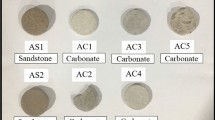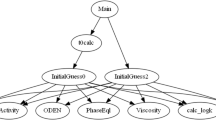Abstract
Naphthenic acids occur naturally in crude oils and can under certain conditions react with metal ions from produced water to form naphthenates. Precipitation of naphthenates can lead to serious problems in oil production facilities. Prediction of naphthenate precipitation is an important step toward early detection and resolution of their associated problems. Developing a method that will accurately predict precipitation of naphthenates in surface facilities and separators is of great value to the industry. In this paper, the principle of metal naphthenate formation is discussed. Experiments were conducted to investigate the effects of synthetic brine on naphthenic crude oil. The results were used to establish the relationship between produced water and the amount of naphthenate deposits. The experiments used a crude oil that has been classified as containing naphthenic acid and a laboratory-prepared synthetic brine. The pH of the brine was adjusted to suit the condition required for the experiment. Results show that increased water cut greatly influences the amount of precipitates. pH of subsequent mixtures increases as the volume of the brine is increased for each successive experiment. Precipitation of naphthenates occurs due to chemical reactions between the ions in both the brine and the naphthenic acid. It is established that as the produced water from reservoir increases, the amount of precipitates formed also increases since there are more ions made available for the chemical reaction. Maximum deposition of naphthenate precipitates occurred at 67 % water cut. The mass of precipitate measured at this water cut was 88 mg from 10 ml of crude oil and 136 mg from 20 ml of the same oil.
Access this chapter
Tax calculation will be finalised at checkout
Purchases are for personal use only
Similar content being viewed by others
Abbreviations
- Ca2+ :
-
Calcium ion
- Na+ :
-
Sodium ion
- V o :
-
Volume of crude oil
- V w :
-
Volume of brine
References
Alec Groysman, Naphtali Brodsky, Joseph Pener and Dmitry Shmulevich, 2007. Low Temperature Naphthenic Acid Corrosion Study, 07569, NACE International.
Bretherton, N., Smith, R., Keilty, G., and S. Ubbels, S., 2005. Napthenates Control: Is Acetic Acid Injection the Answer? Paper SPE 95115 presented at SPE International Symposium on Oilfield Corrosion held on 13 May, Aberdeen, United Kingdom.
Goldszal, A., Hurtevent, C. and Rousseau, G., 2002. Scales and Naphthenates Inhibition in Deep-Offshore Fields. Paper SPE74661 presented at SPE Oilfield Scale Symposium, held on 1st Nov., in Aberdeen, UK.
Kane, R.D. and Cayard, M.S., 2002. A Comprehensive Study on Naphthenic Acid Corrosion. Paper 02555. CORROSION 2002, NACE International.
Mohammed, M. A., 2010. Characterization, Modeling, Prediction and Inhibition of Naphthenate Deposits in Oilfield Production. Thesis. Heriot-Watt University.
Mohammed, M.A., Sorbie, K.S and Shepherd, A.G., 2009. Thermodynamic Modeling of Naphthenate Formation and Related pH Change Experiment. SPE Production & Operation Journal (August) 466–472.
Rousseau, G., Zhou, H., Hurtevent, C., 2001. Calcium Carbonate and Naphthenate Mixed Scale in Deep-Offshore Fields. Paper SPE 68307 Presented at SPE Oilfield Scale Symposium held in Aberdeen, UK.
Rowland, S.J., West C.E., Scarlett, A.G. and Jones, D., 2011. Identification of Individual Acids in a Commercial Sample of Naphthenic Acids from Petroleum by Two-Dimensional Comprehensive Gas Chromatography/Mass Spectrometry, PMID: 21598334 [PubMed - indexed for MEDLINE], June.
Slavcheva, E., Shone, B. and Turnbull, A., 2002. Review of Naphthenic Acid Corrosion in Oil Refining, Br Corrosion Journal, 34(2) (1999) 125-131.
Trond E. H., 2002. Formation of Calcium Naphthenates in Water/Oil Systems, Naphthenic Acid Chemistry and Emulsion Stability, October.
Sarac, S., and Civan, F., 2007. Experimental Investigation and Modeling of Naphthenate Soap Precipitation Kinetics in Petroleum Reservoirs. Paper SPE 106074 presented at the International Symposium on Oilfield Chemistry, Houston, TX, USA.
Author information
Authors and Affiliations
Corresponding author
Editor information
Editors and Affiliations
Rights and permissions
Copyright information
© 2015 Springer Science+Business Media Singapore
About this paper
Cite this paper
Sulaimon, A.A., Arumugam, S., Adeyemi, B.J. (2015). Investigating the Influence of Water Cut on Naphthenate Precipitation in Oil Production Facilities. In: Awang, M., Negash, B., Md Akhir, N., Lubis, L. (eds) ICIPEG 2014. Springer, Singapore. https://doi.org/10.1007/978-981-287-368-2_14
Download citation
DOI: https://doi.org/10.1007/978-981-287-368-2_14
Published:
Publisher Name: Springer, Singapore
Print ISBN: 978-981-287-367-5
Online ISBN: 978-981-287-368-2
eBook Packages: EnergyEnergy (R0)




